What is Data Analytics?
Data analytics involves examining raw data to uncover patterns, trends, and insights. It uses statistical tools and algorithms to interpret data, enabling businesses to make informed decisions, optimize processes, and predict future outcomes.
Data Analytics
Data analytics transforms raw data into actionable insights for informed decision-making.
Data Analytics
We collect and perform analysis of data by systematic examination of an organization to find trends and draw conclusions about the information they contain. Increasingly, data analytics is done with the aid of specialized systems and software. This in turn helps businesses optimize their performances, helps companies make better business decisions, products, and services, and helps analyse trends.
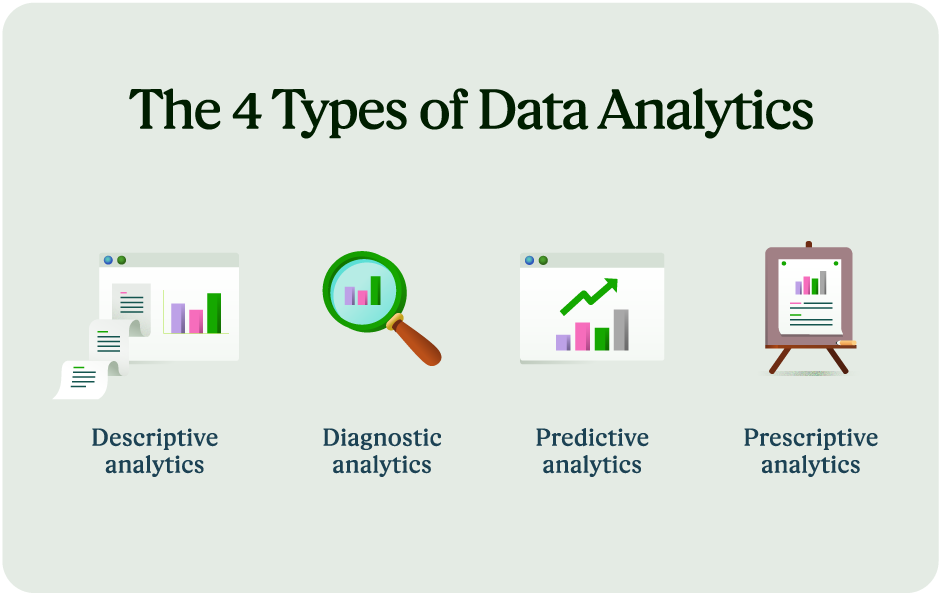
Data analytics encompasses a range of techniques used to extract insights from data, helping businesses make informed decisions. Here are the four main types of data analytics and how they contribute to organizational success:
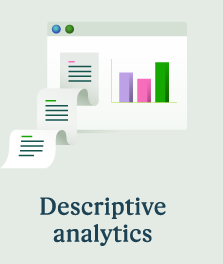
Descriptive Analytics
Descriptive analytics focuses on summarizing historical data to provide a clear view of past events and trends. This type of analytics answers the question, “What happened?” Businesses use descriptive analytics to create reports and dashboards that display key metrics, allowing them to understand their past performance.
- Applications: Sales reporting, website traffic analysis, customer behavior tracking, and financial statements.
- Benefits: Helps businesses monitor progress, identify trends, and communicate results to stakeholders.
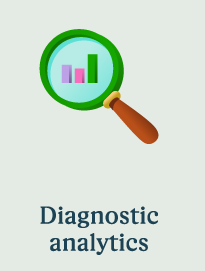
Diagnostic Analytics
Diagnostic analytics goes a step further by examining data to determine why certain events or trends occurred. It answers the question, “Why did it happen?” This type of analysis often involves exploring correlations, causations, and outliers to uncover the root causes of business outcomes.
- Applications: Root cause analysis, identifying operational bottlenecks, and customer churn analysis.
- Benefits: Allows businesses to address issues at their source, improving operational efficiency and customer satisfaction.
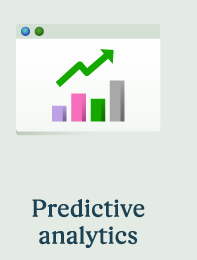
Predictive Analytics
Predictive analytics uses statistical models and machine learning algorithms to forecast future events and trends. It answers the question, “What will happen?” Businesses leverage predictive analytics to anticipate customer behavior, market trends, and other key factors that impact decision-making.
- Applications: Sales forecasting, demand planning, risk assessment, and customer lifetime value prediction.
- Benefits: Enables businesses to make proactive decisions, reducing uncertainty and gaining a competitive edge.
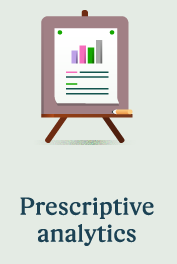
Prescriptive Analytics
Prescriptive analytics suggests specific actions or solutions to achieve desired outcomes. It answers the question, “What should we do?” This type of analytics uses optimization algorithms and scenario analysis to recommend the best course of action.
- Applications: Supply chain optimization, personalized marketing, and resource allocation.
- Benefits: Provides actionable insights that drive efficiency, innovation, and customer satisfaction.
Integrating Data Analytics Types
While each type of data analytics has its own focus, businesses often use a combination of these approaches to derive comprehensive insights. Integrating descriptive, diagnostic, predictive, and prescriptive analytics allows organizations to understand past events, diagnose problems, predict future trends, and implement optimal solutions.
Our Key Offering
At ZHD Consulting, we specialize in providing comprehensive data analytics solutions that encompass all four types of data analytics. Our team of experts works closely with clients to understand their unique needs and tailor data-driven strategies that drive business success. By leveraging our expertise, businesses can gain a deeper understanding of their operations, customers, and markets, allowing them to make informed decisions that lead to sustainable growth and efficiency.
Your IT Simplified
Focus on your core business while we take care of your IT needs.
